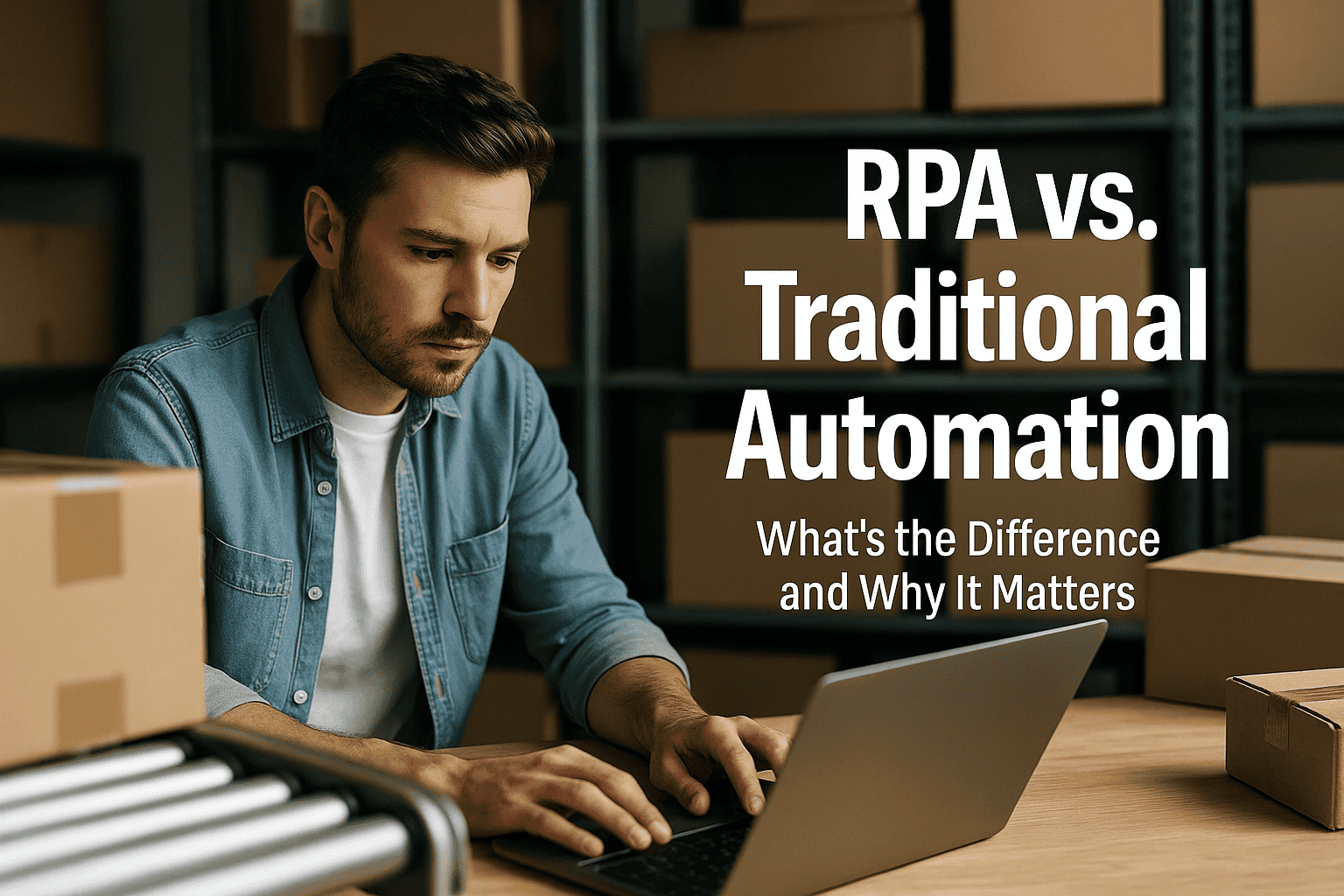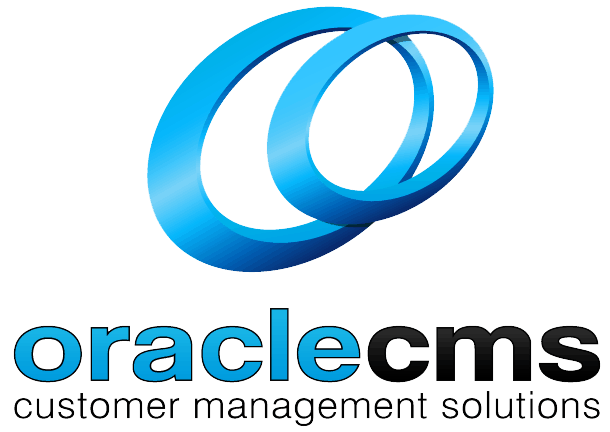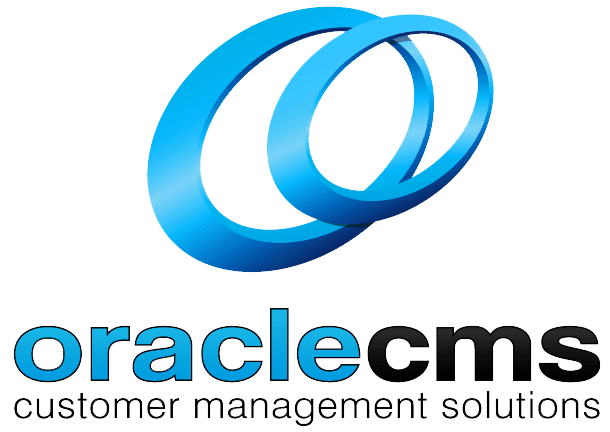
RPA vs. Traditional Automation: What’s the Difference and Why It Matters
Automation has become a cornerstone of modern business strategy. But not all automation is the same. The terms “RPA” and “traditional automation” are often used interchangeably and that leads to confusion when leaders try to evaluate which approach fits their needs.
Robotic Process Automation (RPA) and traditional automation differ in how they work, where they fit, and what problems they solve. While RPA automation focuses on replicating repetitive tasks across digital systems without deep integration, traditional automation tends to require more complex development and backend changes.
Understanding those differences helps IT leaders, business analysts, and decision-makers choose the right solution and avoid costly missteps.
A Brief History of Automation in Business
Traditional automation started with rule-based scripts and hard-coded processes. These systems worked well for predictable, structured tasks embedded deep within IT systems. They became the foundation of ERP platforms, workflow engines, and custom-coded business logic.
But as businesses grew and adopted more systems, these automations struggled to keep up. Making changes was slow. Integrating across platforms became a challenge. RPA emerged as a faster, lighter-weight alternative that didn’t require changing underlying systems. Instead of building from the back-end, it operated through the user interface just like a person would.
What Is Traditional Automation?
Traditional automation involves coding specific instructions into applications or systems. It’s built into software at the development level or integrated through custom backend solutions. These workflows are typically static and require significant IT involvement to update or troubleshoot.
It’s ideal for deeply embedded business rules like accounting systems, database syncing, or back-end reporting. But it lacks flexibility. Changing anything can trigger downstream effects, requiring testing and redevelopment.
What Is Robotic Process Automation (RPA)?
RPA uses bots lightweight scripts that perform tasks by imitating how a person uses software. These bots interact with interfaces, copy and paste data, fill out forms, and follow rules all without altering the underlying system.
This makes RPA ideal for bridging gaps between systems that don’t integrate well. It can work across CRMs, ERPs, browsers, and legacy tools with minimal disruption. It’s also much faster to deploy and can often be managed directly by business units without relying heavily on IT.
Key Differences Between RPA and Traditional Automation
Traditional automation works in the backend, while RPA operates on the surface the same way a user would. That difference has major implications.
RPA is:
- Easier to deploy without modifying infrastructure
- Flexible enough to handle exceptions or varied inputs
- Accessible to non-technical teams for maintenance and control
- Scalable across departments without the need for deep integrations
Traditional automation, by contrast, requires:
- Deeper technical involvement
- Longer deployment cycles
- Higher upfront development costs
- Ongoing IT ownership for updates and changes
Common Misconceptions About RPA
RPA is often misunderstood. It’s not artificial intelligence it doesn’t learn or make decisions beyond its programmed rules. It also doesn’t remove the need for thoughtful process design.
Successful RPA depends on structured, rule-based workflows. If a process is messy, unclear, or constantly changing, it’s not a good candidate. RPA isn’t plug-and-play but it’s faster and more flexible than traditional methods when used correctly.
RPA as an Enabler, Not a Replacement
There’s often concern that automation will replace jobs. But RPA is best used to remove repetitive, manual tasks not people. When bots take over data entry, document handling, or system updates, staff can focus on analysis, planning, and serving customers.
This doesn’t just improve productivity. It reduces burnout, lowers error rates, and boosts morale by letting people do more meaningful work.
Why the Difference Matters to Business Leaders
Business leaders care about results, speed, and ROI. RPA provides a way to automate processes without costly system overhauls. It empowers business users to automate what they know best without waiting for IT bandwidth.
Meanwhile, traditional automation is better for core business logic that rarely changes. But it comes with higher long-term investment and maintenance.
Understanding the difference allows leaders to use the right tool for the right problem and avoid treating every automation opportunity the same way.
Use Cases: When to Choose RPA vs. Traditional Automation
RPA is ideal for:
- Invoice and payment processing
- Customer data updates across platforms
- Report generation and distribution
- Legacy system integration
Traditional automation works best for:
- Backend financial calculations
- System logic within ERP platforms
- Structured data warehouse integrations
- Deep logic processes that rarely change
In many organisations, both approaches are used in tandem. RPA can be a fast fix, while traditional automation anchors long-term stability.
The Role of RPA in Modern Automation Strategies
RPA doesn’t replace traditional automation it complements it. In modern automation stacks, RPA is often used to connect gaps between systems or handle manual workarounds while longer-term solutions are in development.
It gives teams the flexibility to automate now, innovate faster, and buy time for broader system upgrades. In short, RPA makes transformation practical.
Preparing for Automation: Change Management Essentials
Even the best tech fails if people don’t use it. That’s why preparing your teams is critical. Change management includes:
- Communicating the purpose and benefits of automation
- Training teams to identify and support good candidates for automation
- Creating internal champions who lead adoption
- Aligning automation initiatives with business priorities
Without this alignment, RPA may be technically successful but fail to deliver lasting value.
How OracleCMS Helps You Choose the Right Path
At OracleCMS, we start with your processes. We assess what’s worth automating, what’s ready for RPA, and what still requires traditional solutions.
We help businesses avoid the trap of overengineering or under-delivering. Our team focuses on scalable results giving you automation that works with your existing systems, timelines, and business goals.
Whether you need rapid RPA deployment or a long-term automation roadmap, we’ll help you find the right balance.
FAQs
Q1: Is RPA secure for sensitive business processes?
A1: Yes. RPA tools include access controls, audit logs, and encryption. Security policies can be aligned with internal compliance standards.
Q2: How long does RPA take to implement?
A2: Most projects are operational within weeks. Traditional automation often takes longer due to deeper integration needs.
Q3: Can RPA work alongside existing systems without changes?
A3: Yes. That’s one of RPA’s biggest advantages no need to modify existing software.
Q4: Who manages RPA bots IT or operations?
A4: Often both. IT handles governance, while operations teams manage day-to-day tasks and workflows.
Q5: Can RPA and traditional automation be used together?
A5: Absolutely. They complement each other and are often deployed in hybrid automation strategies.
Automation isn’t one-size-fits-all. OracleCMS helps you make the right choice for long-term success.



